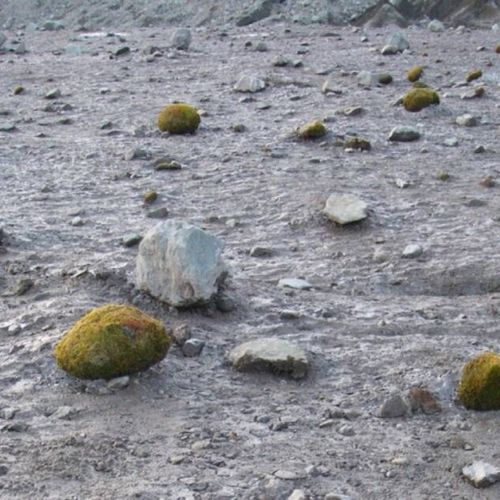
| Added | Sat, 30/05/2020 |
| Источники | |
| Дата публикации | Sat, 30/05/2020
|
Glaciers, spangled with bright green balls of moss, the picture itself is incredible. But more surprising is that this colony green balls moving, all roughly at the same speed and in the same direction.
Ice balls of moss called "glacier mice", was the subject of a recent study. According to the report, each ball is a soft and moist cushion of moss. The study's authors believe that they develop from impurities on the ice surface.
Tim Bartholomaus, glaciologist from the University of Idaho, told NPR the first time I saw "ice mice" in 2006 in the area of the Ruth glacier in Alaska: "in the Middle of a snow-white world was green to these rare creatures, they were not attached to anything and just resting on the ice."
The study showed that the balls are moved on average 2.5 cm per day. Environmentalist Sophie Gilbert pointed out that the movement they need because moss is on all sides of the bowl periodically to sunlight.
The existence of "ice mice" scientists have known since 1950-ies. This phenomenon has been observed in Alaska, Svalbard, Iceland and South America.
In the new study, the researchers decided to track 30 balls ice moss in Alaska and tagged each with a loop of wire with colored beads. They tracked the location of each ball for 54 days in 2009, and then came back to check on them in 2010, 2011 and 2012.
It was amazing, but the ice balls of moss were moving together. Bartolomeus compared them with a herd of animals or flock of birds. First, the researchers thought that the balls would roll down, but later found that the slope here at anything. Then they suggested that all the matter in the direction of the wind, but wind data have not confirmed this theory. Finally, the researchers decided to test whether the sun can cause the melting of the ice, which leads to a displacement of the balls, but this version was wrong.
"I hope we ever solve the mystery of "ice mice"," — said the scientist.
A study published in Polar Biology.
Translated by «Yandex.Translator»
Log in or register to post comments

